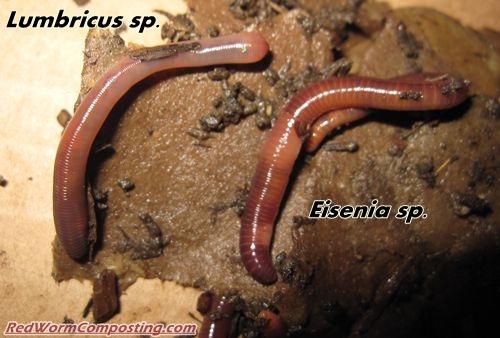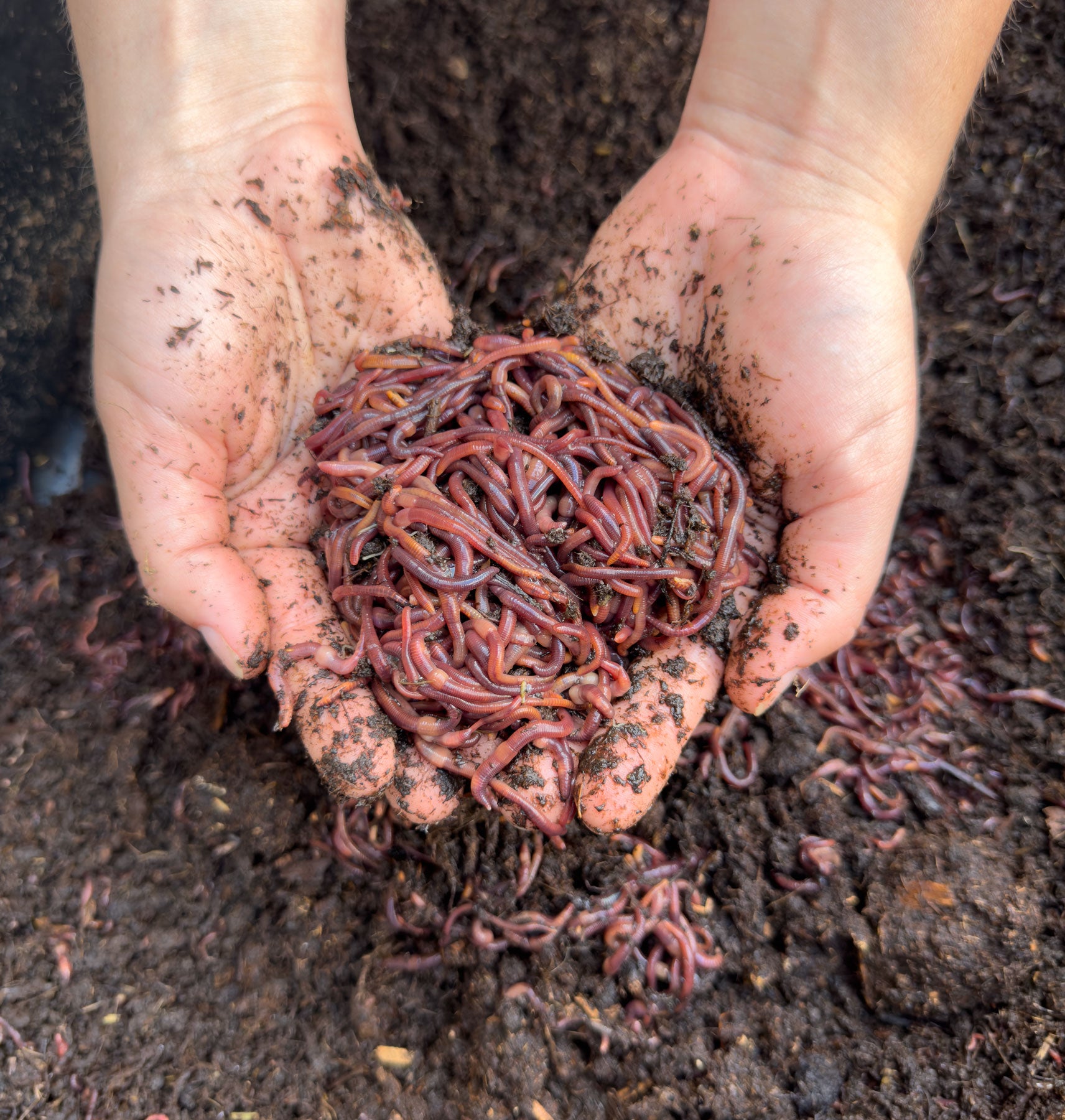Change Your Waste with Red Wiggler Composting: A Total Beginner's Guide
Change Your Waste with Red Wiggler Composting: A Total Beginner's Guide
Blog Article
Taking Advantage Of the Power of Red Wiggler Composting: A Comprehensive Appearance at the Environmental and Agricultural Benefits of This Natural Waste Reduction Approach
The practice of red wiggler composting represents a compelling intersection of ecological stewardship and farming development, providing a lasting option to the expanding challenges of waste management and soil degradation. With the all-natural procedure of vermicomposting, organic waste is changed into a valuable resource that not only enhances soil however likewise adds to a significant reduction in garbage dump contributions and greenhouse gas emissions. As we check out the diverse benefits of this approach, we reveal how it can reshape farming practices and advertise ecological understanding, prompting a closer examination of its possible effect on our environments and areas.
What Are Red Wiggler Worms?
Red wiggler worms, medically called Eisenia fetida, are a types of earthworm specifically adapted for composting and natural waste failure. These worms grow in the nutrient-rich atmosphere of breaking down organic issue, making them excellent for vermicomposting systems. Growing to a size of around three to 4 inches, red wigglers are defined by their reddish-brown coloration and distinctive banding patterns along their bodies.
Unlike various other earthworm varieties, red wigglers choose to occupy the top layers of soil and organic particles, where oxygen levels are greater and food resources are plentiful. Their physiological adaptations enable them to refine organic products successfully; they possess a strong gastrointestinal system that allows them to convert waste into nutrient-rich spreadings, usually referred to as "black gold" in horticulture and agricultural contexts.
Eisenia fetida plays a vital function in the community by helping with the disintegration procedure, enhancing soil framework, and promoting microbial activity. Given their one-of-a-kind qualities and environmental significance, red wiggler worms have ended up being a main component in sustainable waste administration techniques and organic gardening initiatives, adding substantially to environmental wellness.
Benefits for Soil Health And Wellness
The incorporation of red wiggler worms in composting systems offers considerable advantages for dirt health. These worms play a crucial duty in the disintegration process, damaging down organic issue into nutrient-rich vermicompost. This natural plant food enhances soil structure, oygenation, and water retention, adding to a much more beneficial environment for plant growth.
Vermicompost is abundant in important nutrients such as potassium, phosphorus, and nitrogen, which are essential for plant growth (Red Wiggler Composting). The existence of helpful microorganisms in vermicompost even more advertises soil health by improving nutrition availability and reducing soil-borne virus. This dynamic interaction promotes a durable soil community that sustains sustainable farming techniques
Furthermore, red wigglers promote the formation of humus, a secure natural issue that boosts soil fertility and durability. This raised organic material not only improves soil structure but additionally enhances its capability to withdraw carbon, mitigating climate change impacts.
Integrating red wiggler composting right into farming systems can, for that reason, cause much healthier soils, greater crop returns, and boosted sustainability. Therefore, accepting this all-natural waste decrease method can produce profound benefits for both the environment and agricultural performance.
Effect On Waste Decrease
Incorporating red wiggler worms right into composting systems considerably decreases waste, changing natural products that would certainly otherwise contribute to land fills into valuable garden compost. This approach, called vermicomposting, effectively processes kitchen area scraps, yard waste, and other naturally degradable products, resulting in a considerable reduction in the volume of waste sent out to garbage dumps. According to the Environmental Protection Firm, organic waste consists of a considerable portion of garbage dump contents, generating unsafe greenhouse gases as it breaks down anaerobically.
By using red wigglers, a very effective composting agent, homes and organizations can divert a considerable amount of natural waste from these landfills. Each pound of red wigglers can refine and eat about half an extra pound of natural waste daily, causing a remarkable decrease in total waste generation.
Additionally, the application of vermicomposting assistances regional waste monitoring initiatives and promotes a round economic situation, in which waste is changed right into a source. As neighborhoods increasingly embrace this method, the collective effect on waste decrease becomes noticeable, promoting a much more sustainable atmosphere and encouraging responsible waste administration methods. Embracing red wiggler composting not only minimizes waste concerns but likewise improves area understanding regarding sustainable living.
Enhancing Agricultural Practices
Making use of red wiggler worms in agricultural practices can substantially boost soil health and crop performance. These worms play an essential duty in the composting process, damaging down raw material right into nutrient-rich vermicompost. This all-natural fertilizer improves soil structure, water, and oygenation retention, which are important for durable plant development.
Moreover, the spreadings created by red wigglers are abundant in necessary nutrients, such as potassium, phosphorus, and nitrogen, promoting healthier crops with higher returns. The microbial task boosted by these worms also adds to a successful soil environment, increasing biodiversity and resilience versus illness and parasites.

Additionally, the usage of vermicompost can boost dirt pH levels, making nutrients a lot more available to plants. Red Wiggler Composting. Consequently, farmers can cultivate much healthier site web crops while simultaneously contributing to soil preservation efforts, inevitably creating a more sustainable agricultural future
Getting Going With Composting
Beginning your composting trip needs an understanding of the important parts and procedures entailed. The key active ingredient in red wiggler composting is natural waste, which can include cooking area scraps, backyard waste, and paper products. It is critical to maintain an equilibrium between environment-friendly materials, abundant in nitrogen, and brown link materials, high in carbon. This balance promotes an ideal atmosphere for red wigglers, which are the vital organisms in this composting technique.
Picking an appropriate composting system is similarly crucial. Worm bins can be designed for interior or outdoor use, and they should provide sufficient water drainage and aeration. It is recommended to begin with a handful of worms-- about one pound of red wigglers for every single one extra pound of waste created weekly.

Verdict

The method of red wiggler composting represents a compelling junction of ecological stewardship and agricultural advancement, offering a lasting option to the growing challenges of waste administration and dirt destruction.Moreover, the application of vermicomposting assistances local waste administration initiatives and promotes a round economic climate, wherein waste is changed into a source. As neighborhoods progressively adopt this practice, the advancing result on waste reduction becomes evident, fostering a much more sustainable atmosphere and encouraging accountable waste monitoring techniques. The key component in red wiggler composting is organic waste, which can consist of kitchen area scraps, yard waste, and paper products.In summary, red wiggler composting presents a lasting remedy for organic waste administration, generating nutrient-rich vermicompost that substantially boosts soil health and wellness.
Report this page